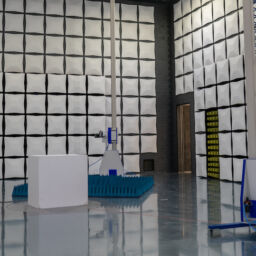
Scientists from NPL and the Measurement Standards Laboratory (MSL) in New Zealand are set to carry out the first ever optical interferometry-based earthquake sensing tests in the Pacific Ocean. By performing ultra-sensitive optical measurements, scientists from the two laboratories will “convert” a seafloor cable extending offshore New Zealand into an array of sensors for earthquakes and ocean currents. These tests will lay the foundation for investigating the potential use of existing seafloor cables as detectors for tsunami early warning systems.
The technique was first pioneered by NPL in 2021 and derived from techniques used for quantum science. It uses existing optical fibre infrastructure to gather continuous, real-time environmental data from the seabed. NPL previously demonstrated the technique in the Atlantic Ocean on a 5,860km-long intercontinental submarine optical fibre link between the UK and Canada.
The Pacific Ocean is a highly seismically active area, providing an ideal test bed for advancing the technology and demonstrating its full potential. NPL and the MSL will test the technique later this year on a section of the 3,876km-long Southern Cross NEXT cable on the floor of the Tasman Sea between New Zealand and Australia.
More than 70% of the Earth’s surface is covered by water, and seas and oceans today are still mainly unmonitored. There are only a handful of permanent ocean-floor sensors in place globally, since installing and maintaining them is challenging and prohibitively expensive. By applying NPL’s technique to a multitude of seafloor cables, thousands of ocean-bottom sensors could be implemented.
NPL’s sensing technique does not require any new hardware or infrastructure to be installed or any changes to existing infrastructure on the seafloor, instead it uses the optical fibre itself as the environmental sensor. NPL’s technique has the potential to provide a valuable early warning system to safeguard coastal populations in the event of a tsunami. It also offers the first viable solution to fill the gap in data in ocean monitoring, with substantial impact in several scientific areas including seismology and oceanography.
Future projects could develop this concept into a worldwide monitoring network, giving earlier and more accurate detection of earthquakes and tsunamis, as well as advancing the world’s understanding of ocean floor geology and climate change through the long-term monitoring of seafloor temperature changes.
Giuseppe Marra, Principal Scientist, NPL said: “This exciting UK-NZ joint project will enable NPL’s pioneering seafloor cable-based environmental detection technique to be tested in one of the most seismically active regions of the world. This will significantly advance research on these innovative environmental sensing techniques, with impact on a number of science areas, from seismology to oceanography, as well as future societal applications, such as in early tsunami warning systems. This project is a testament to how science is capable of bringing together minds from the world’s antipodes to advance our knowledge of how our planet works and bring positive impact to society.”











